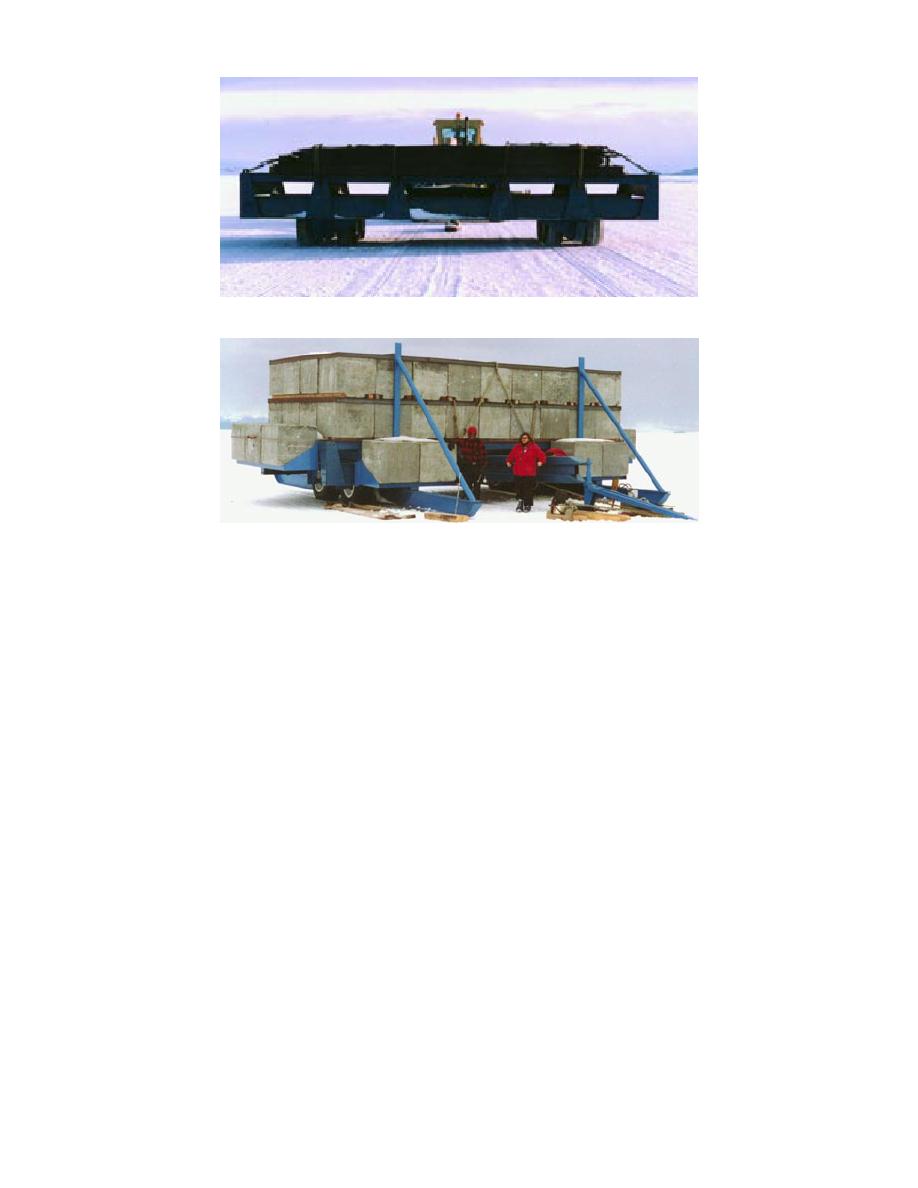
a. Ballasted with steel plate.
b. Ballasted with concrete blocks.
Figure 50. Proof cart configured for C-141 landing gear.
tracks down the entire length of the runway. This
In addition, the grader is easy to operate in a
yielded an average space between tire tracks of
straight line. When the grader was not available,
1.4 m (4.5 ft) (Fig. 52). Approximately 40 ice fail-
we used an LGP D8 bulldozer effectively. It was
ures occurred. The failures were noncatastrophic
difficult to maintain a straight line when towing
and were often difficult to detect when they
with the bulldozer, and the speed and comfort
occurred. At no time did the proof cart sink more
were compromised when using this tractor in-
than 13 cm (5 in.) and the grader had no problem
stead of the grader. The proof cart was also much
continuing to tow the proof cart. For this reason,
easier to turn at the ends of the runway when
we feel confident recommending what might seem
towed with the grader compared to the D8.
to be a low factor of safety (FS) of 1.25. We cau-
At the Pegasus runway, our ultimate goal was
tion against using a FS any greater than about 1.5.
to certify the runway for C-141 use. There were
No good is served by grossly overloading the ice,
questions about whether the C-141 or the C-130
perhaps creating numerous failed areas; this only
would provide the more severe test of runway
serves to erode confidence in the runway's ability
strength since the contact pressure was higher for
to support aircraft. However, if it is discovered
the C-141, but the individual tire load was higher
that ice failures are catastrophic, creating deep
for the C-130. Our initial configuration for the
potholes and potentially damaging aircraft or their
proof cart was for the C-141, with eight tires sup-
handling characteristics, then a greater FS may be
porting a total mass of 121,900 kg (268,500 lb).
warranted.
The first pass of the proof cart (on 8 November
Close examination of the failure points revealed
1992) was down the centerline of the runway.
that they were all located in meltwater ice (ice
During the first pass, six weak spots were dis-
that formed from freezing of water from the prior
covered. In each case, a single tire, or one pair of
season's melt pools or the snow melter water used
the four pairs of proof cart tires rutted the ice
to fill the large depressions in the natural ice sur-
(Fig. 51). A total of 12 round-trips were made
face). Blocky pieces of ice were generally present
with the proof cart resulting in 48 individual tire
49



 Previous Page
Previous Page
